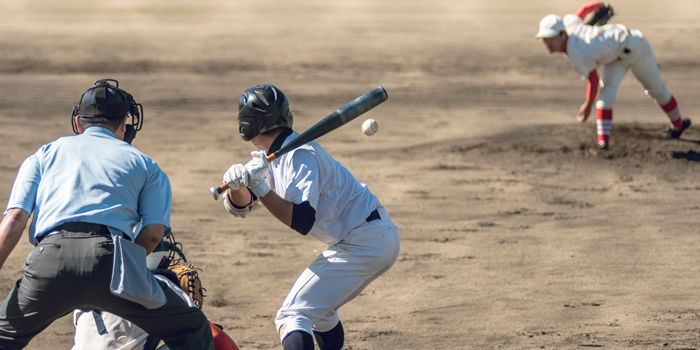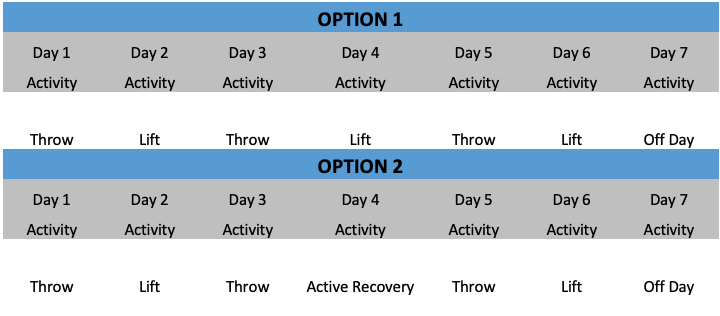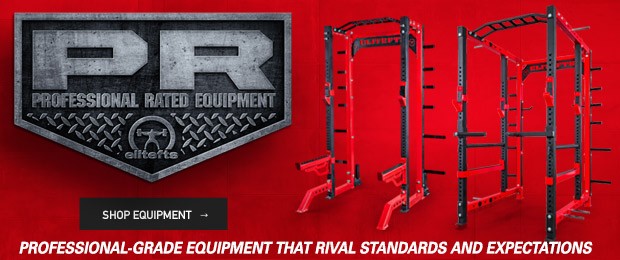
Disclaimer: These are my own thoughts and views.
Nowadays, especially if you live in a warm state, kids are playing baseball year-round. With sport specialization being so high in youth sports, athletes at a young age are only playing one sport their entire life. If you have athletes that compete year-round, here are some ways that I have found success in training the year-round baseball player. Apply these principles to any athlete.
- Key in on the time between non-baseball activities.
- Emphasis recovery methods during spikes in the volume of play.
- Determine what position they play (pitcher or positional player).
- What are their physical (strength, flexibility, speed) needs?
If your athlete is playing year-round, the first thing to do is identify the periods of time where they will not be involved in baseball activity. These times are typically between summer ball and fall ball and between fall ball and competitive season. Identifying these time periods will allow you to make a game plan and approach their training program like a true off-season.
RECENT: Utilization and Progressions of the Hip Thrust in Baseball
Often, coaches will train their baseball players during fall ball and treat their programming as a true off-season. Some may justify this because it is not their competitive season. The potential issue with this is that the athlete may experience workloads from these offseason baseball activities that match in-season workloads. Things that can contribute to a baseball player's workload are total running distance, swings, and throws. Assessing how many days a week the athlete is playing will allow you to know how many training sessions you can get in during the week. Even with variable workloads that each athlete experiences, it is still possible to achieve physical progression during their intervals of play.
It is acceptable for your athlete to lift the same day they play, even if the lift is before the game. This is especially true if they can train in the morning and then compete that afternoon or evening. In regards to pitchers, it is important to know the volume of pitches they will have on that day. To play it safe with pitchers, I would recommend lifting them the day after starting to aid in their recovery. Not all youth pitchers are kept to a standard of a five-day rotation regarding pitching frequency. Below is an example of how you could set up a weekly lift schedule for your pitchers to ensure recovery.
When your athlete is in their competitive sport, assess them physically in regards to readiness. By this, know their fatigue level when beginning their training sessions. There will be times you will need to spend more time on recovery than actual training. This may even include a recovery lift, including movements that will aid the recovery process. On the other hand, there will be days where that athlete is recovered and can get in a good training session. It has been said a lot in our field and I'll say it again: having a good relationship with your athlete by having a two-way street of communication will give you a better understanding of their readiness.
During the breaks in baseball activity, it's the best time for new exercises and drills to be introduced. When the athlete is playing, you should be making the volume and intensity changes, not changing exercises to new ones. Remember, lifting is a skill. Most athletes are not proficient enough in the skill of lifting for complete changes in the style of their lifting during their baseball activity. For example, if an athlete has never squatted, but they have been doing trap bar deadlifts for the past four weeks, it is not a good time to start squatting them. Be simple in your training. In the age of social media, athletes see a professional doing a sport-specific movement and think they need to do that complicated exercise in order to compete at a higher level. I think that coaches sometimes can fall into this pitfall as well. In the weight room, hinging at the hips properly and pulling and pushing with proper pelvic control is the groundwork for improved athletic performance.
Lastly, it is your job as a strength or performance coach to not only train these athletes but educate them on pre- and post-baseball routines. Many young athletes think warming up to throw is to just start throwing a shorter distance. Providing your athlete with a dynamic warm-up they can do before their specific baseball activity will go a long way in their preparation. If there is a span that you aren’t going to see your athlete for an extended period of time, give them a warm-up with exercises that you have been prescribing them to address their deficits in performance. Quadruped t-spine, planks, and glute bridges are examples.
Above is an example of a yearly plan that can be applied to the baseball player that plays year-round and will allow you to maximize their training to prepare them physically. Take advantage of the times that the athlete is not playing, but be mindful of when they are.
Build trust and DON’T BE AFRAID TO LIFT YOUR ATHLETES!
Header image credit: mtaira © 123rf.com
 Travis Roberson is a Minor League Strength and Conditioning Coach for the Cleveland Indians. This year he'll be the Strength Coach for the Columbus Clippers. Before working for the Indians, he was a college strength coach at the University of Findlay for six years and competed in powerlifting.
Travis Roberson is a Minor League Strength and Conditioning Coach for the Cleveland Indians. This year he'll be the Strength Coach for the Columbus Clippers. Before working for the Indians, he was a college strength coach at the University of Findlay for six years and competed in powerlifting.











